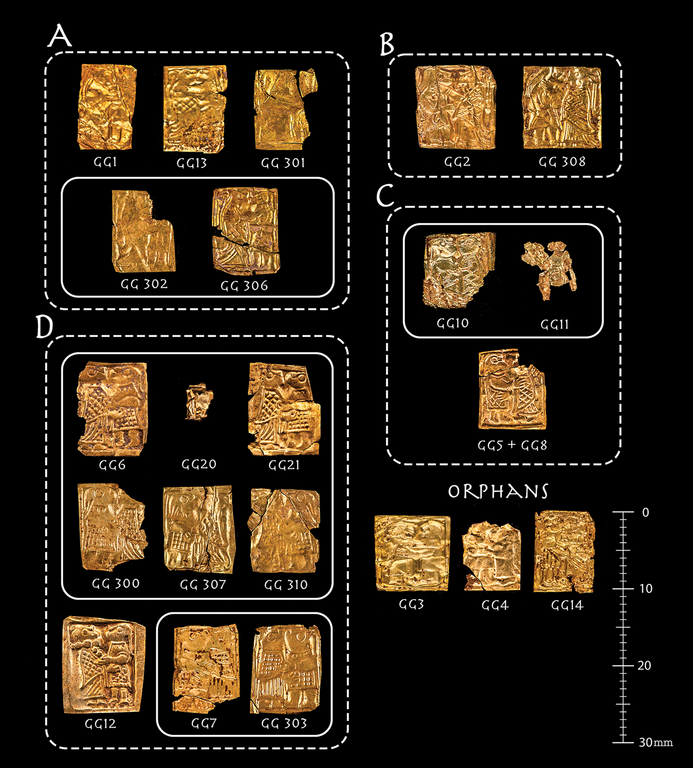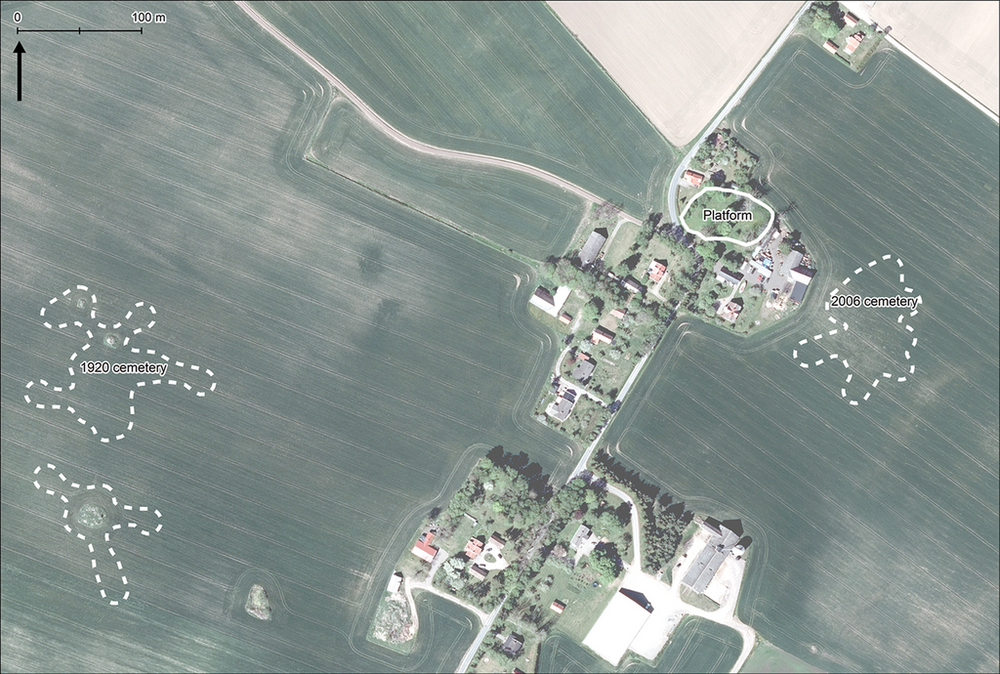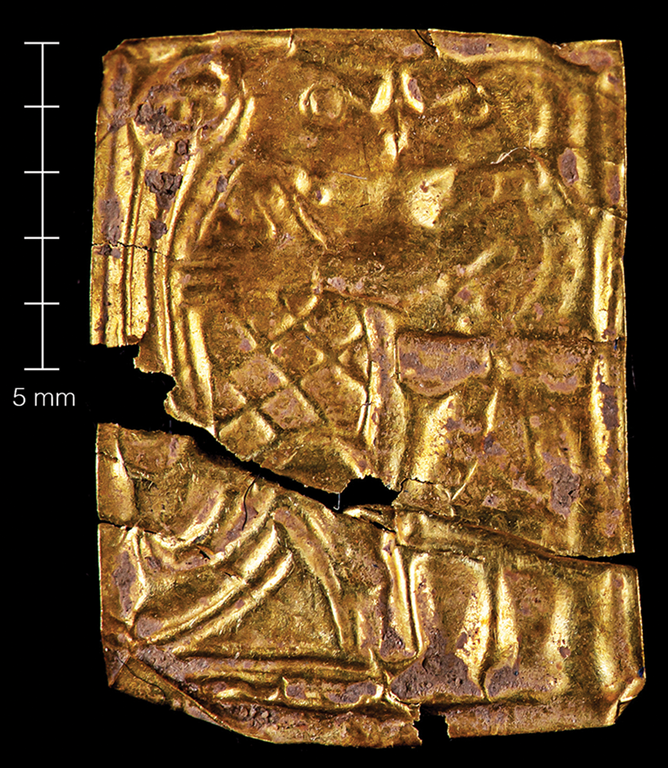Excavations and geophysical investigations conducted by dr. Martina Rundkvista (Faculty of Philosophy and History UŁ) in Sweden, in collaboration with Östergötland County Museum, have revealed the foundation of an almost 50-metre wooden building on a tall earthen platform in the village of Aska. It stood from c. AD 650 to 950 and has yielded 30 miniature gold foil images of richly dressed embracing couples.

As Dr. Martin Rundkvist explains:
This must be the main manor house of a provincial royal dynasty in the last three centuries before the Medieval Kingdom of Sweden formed in the 990s. It is the largest building we know of in Östergötland prior to the construction of Linköping Cathedral. There are no narrative written sources for this time and region, so no names survive.
Second author Axel Löfving notes:
Gold foil miniatures of the type found are known from many aristocratic sites across Scandinavia. But their function and symbolism is not well understood. They are thin and easily damaged and seem to have no practical use. They were probably buried shortly after they were made. Academic interpretations of the embrace motif have ranged from ritual effigies of divine ancestors of the royal linage, to gifts at earthly weddings in the top aristocracy.
The fieldwork at Aska was made possible with a combination of Polish and Swedish funding. It was carried out by a team of Łódź and Stockholm archaeology students, with support from the Swedish Metal Detector Association.

Archaeological excavations in Sweden are extremely well funded and skilfully executed wherever the National Road Authority is involved. But these highway and railway projects avoid unusual sites of major archaeological interest, both to preserve them and to save the tax payers’ money. At Aska, the University of Łódź and Östergötland County Museum have been able to investigate something important that the Swedish institutional system would not otherwise have been motivated to target.
–emphasizes Dr. Martin Rundkvist of the Faculty of Philosophy and History of the University of Lodz
In Polish terms, the new discovery can be seen as the Swedish equivalent of a royal seat of one of the Lechitic tribes (Pl. Plemiona lechickie) that were unified under Mieszko I in the mid-900s. Contact across the Baltic Sea between Sweden and Poland increased over the centuries when the great hall stood at Aska, and there is much evidence for Slavic culture in southern Sweden from the 900s onward.
Dr Rundkvist Jokes :
Local Swedish pottery of the 700s and 800s is a disgrace and must be hidden from view in museums. It does not improve until the arrival of Polish potters in the 900s, apparently specialised craftswomen.

Important results were achieved in laboratories after the fieldwork closed. Among the many small bone fragments are some from human skulls that are hundreds of years older than the building itself. Apparently, skulls were collected from old graves and deposited on top of the house foundation in a closing ritual, after the building had been dismantled. Carbonised seeds from soil samples provide information about the aristocratic diet and have offered a convenient way to radiocarbon-date the period over which cooking took place in the great hall.
More information on the discovery by Dr. Martin Rundkvist's team can be found here.
Content: dr Martin Rundkvist
Photos: Björn Falkevik
Editorial: Promotion Department of the Faculty of Philosophy and History, University of Lodz.
